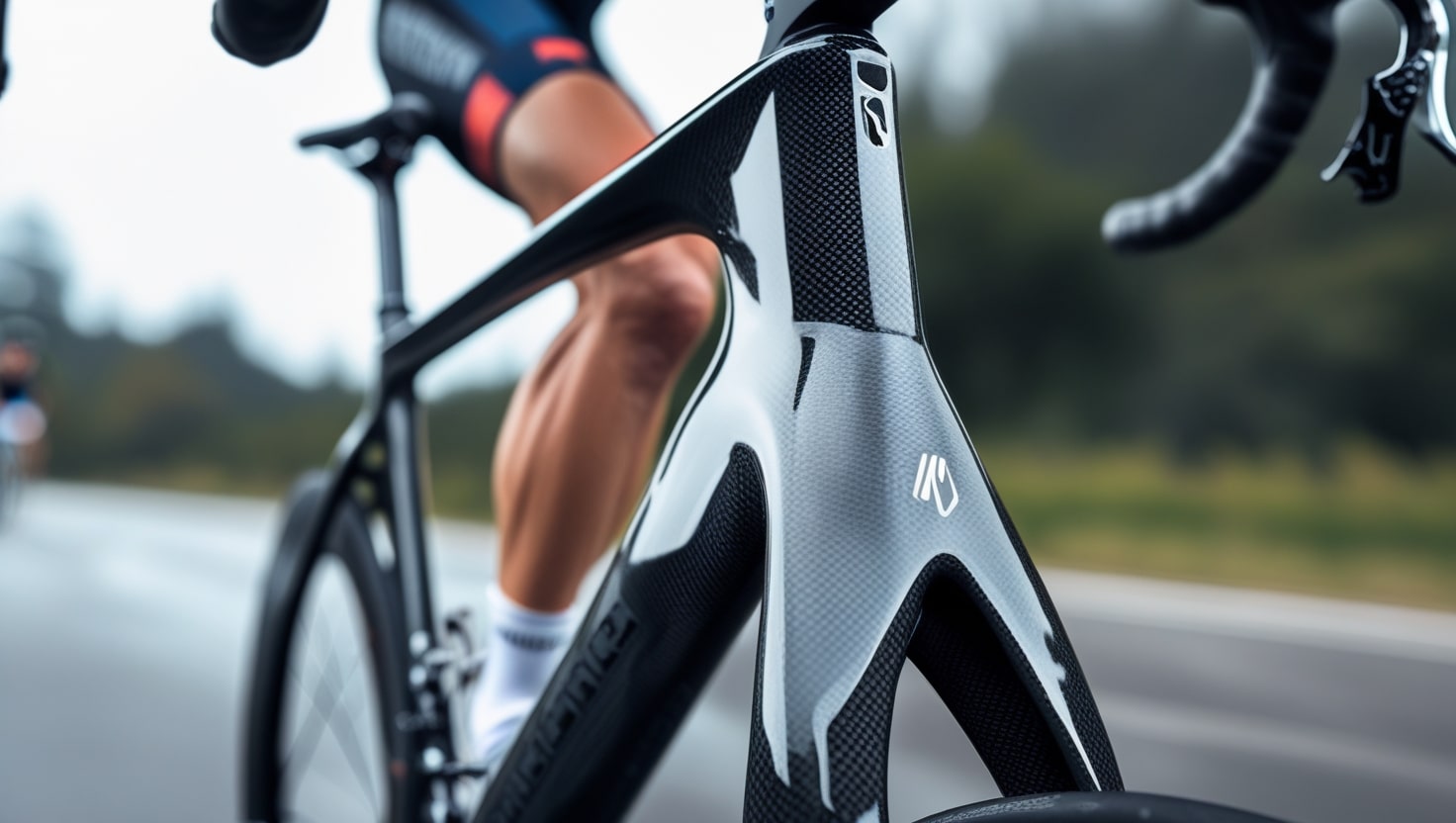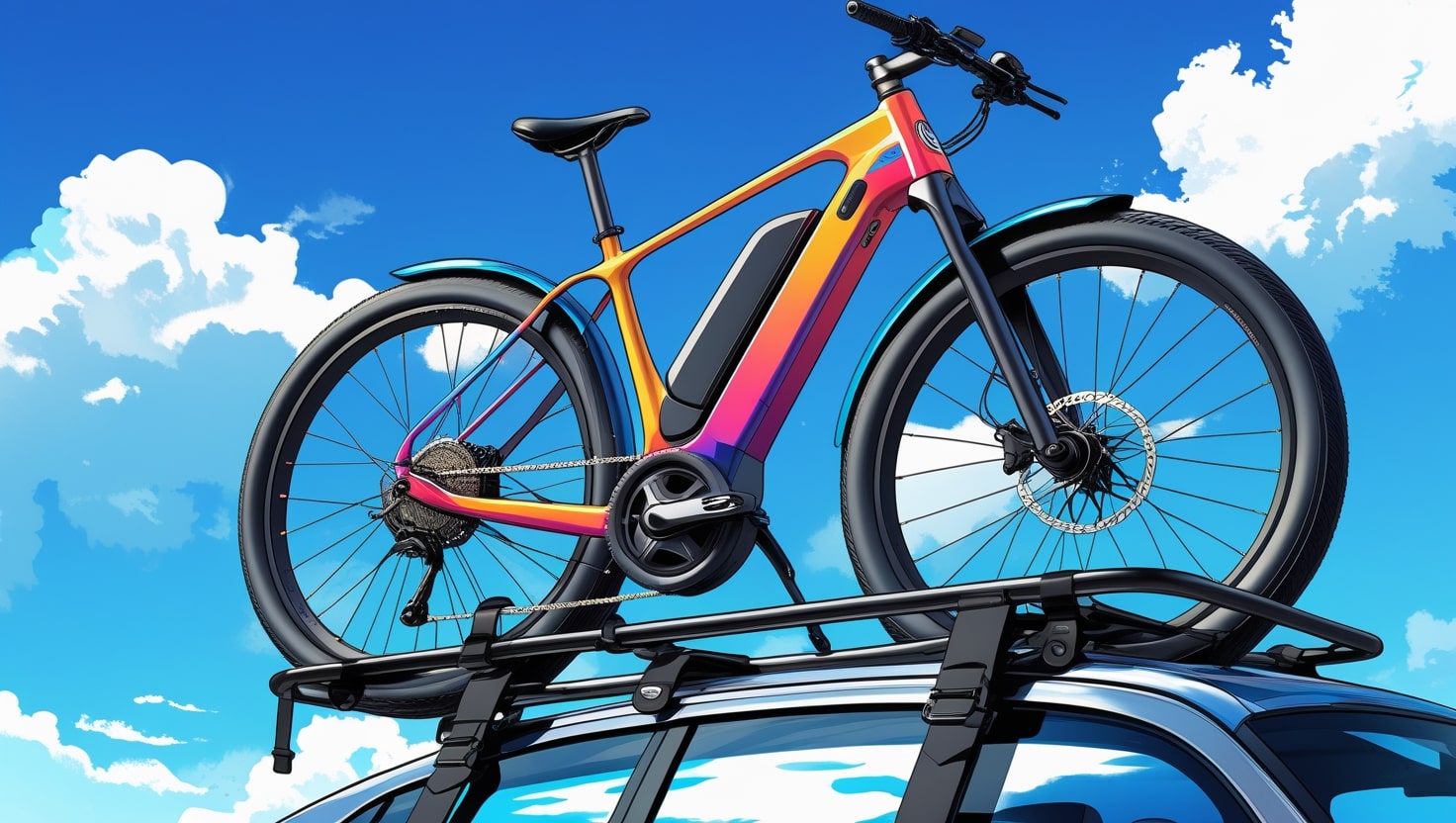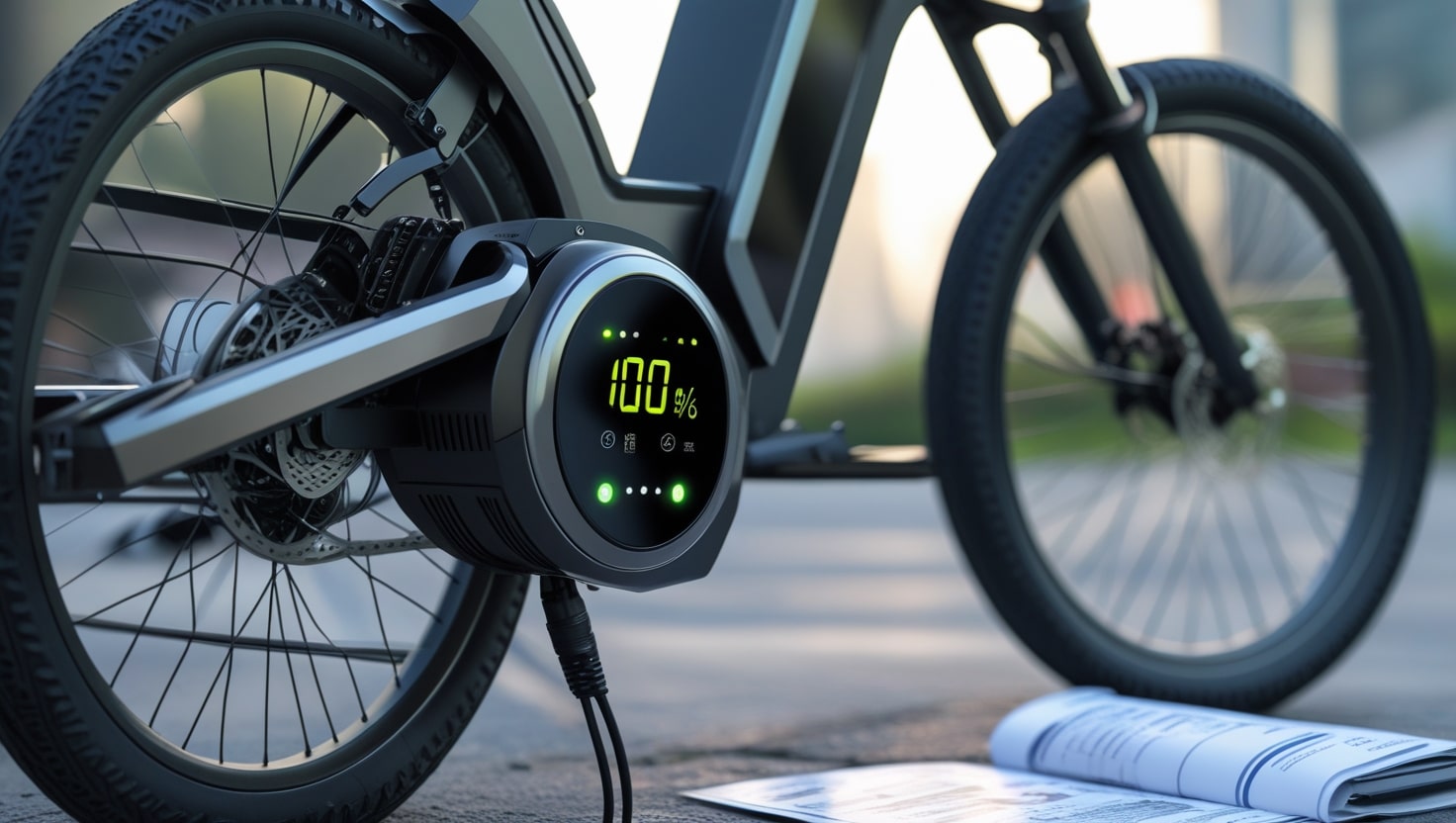When choosing the best Bluetooth helmets for motorcycles, it’s crucial to think beyond just protection; modern helmets come equipped with features that enhance the entire riding experience. From communication systems integrated smoothly into the design to smartphone connectivity that lets you stay in touch while on the road, these helmets offer both safety and convenience. Many models come preinstalled with comms for a clean look, eliminating the need for bulky aftermarket devices strapped to your chin-bar.
Personally, I’ve found that the best options are those that prioritize seamless integration, not just for aesthetic appeal but also for ease of use. Brain buckets with custom Bluetooth setups keep things tidy while ensuring the best convenience when connecting your smartphone or other tech.
Whether you’re looking for a model that’s already ready for action or one that’s easily adapted, the market offers plenty of choices designed for motorcycle enthusiasts like us. What I appreciate most is how these lids manage to blend form and function, making sure you’re fully geared up with the latest tech without compromising style.
The Best Bluetooth Helmets for Motorcycles
Selection & Testing
In recent years, there has been an unprecedented number of Bluetooth-ready helmets hitting the market, each equipped with comms that enhance the rider’s experience. To find the best options available, we started by conducting a thorough search of every model and comm system out there.
We focused on key characteristics such as shell construction, shell sizes, and the number of intake and exhaust ports. Additionally, we considered the mounting location of each system, which is important for both convenience and usability. This process helped us create a shortlist of helmets that seemed to offer the best value for money.
Once we had our shortlist, we went hands-on by testing each Bluetooth-ready helmet ourselves. This testing phase allowed us to assess performance based on several factors. We paid close attention to sound quality, call quality, and battery life, as these are essential aspects of any helmet with integrated comms.
We also evaluated how easy it was to use the exterior control buttons during real rides, even when wearing gloves. Other important factors included comfort, wind noise, and overall build quality. The craftsmanship and aerodynamics of each brain bucket also played a significant role in determining which helmets performed best in real-world conditions.
During our tests, we conducted a freeway call test to evaluate audio quality and clarity. We compared the advertised battery life from each manufacturer to what we experienced in reality, giving us a deeper understanding of each helmet’s reliability. Our thorough findings ultimately led to the selection of the top-performing Bluetooth-ready helmets that truly live up to their promise.
Related: Best Backpacks for Motorcycle
1. ICON Domain Cornelius
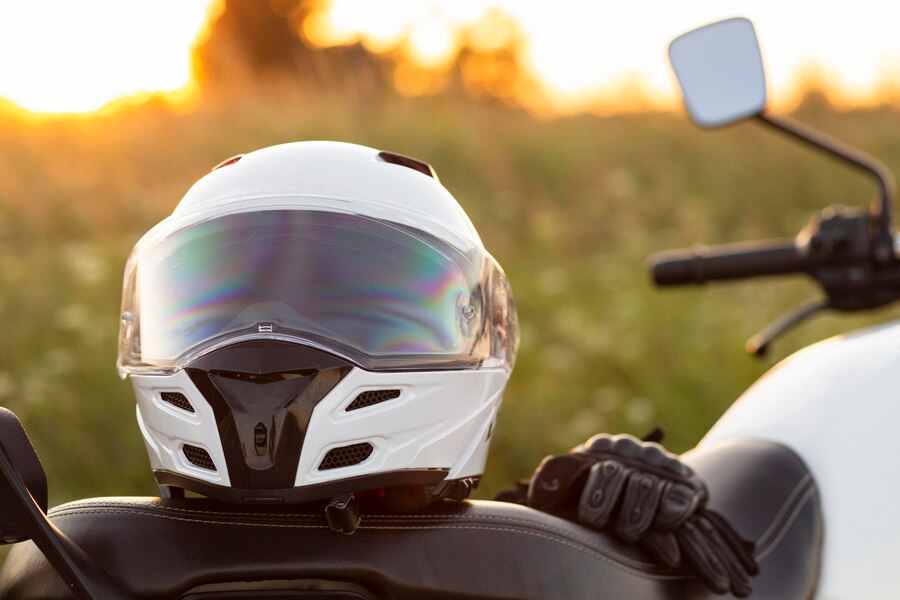
Pros:
- Sports a unique, retro-inspired design
- Offers great value for its price
- Can be optioned with various face shield and spoiler color options
- Features an accelerometer-driven LED brake-light
Cons:
- Comm unit costs almost as much as the helmet
- Helmet lacks build quality and the top-shelf materials seen in more premium lids
The ICON Domain Cornelius has been reintroduced to the Portland brand’s lineup after a decade-long hiatus and has quickly become a standout in the world of motorcycle helmets. This modern full-face helmet combines a unique blend of idiosyncratic, retro-inspired design with great performance, offering impressive bang-for-your-buck. Positioned in the middle of the company’s lineup, it sits above cheaper models like the Airform and Airflite and just below the higher-end Airframe Pro. It’s also the lightest helmet made by ICON, which is a big plus for comfort and long rides.
What makes the Domain Cornelius even more appealing is its custom-developed comm system. It provides both Bluetooth and Mesh connectivity, making it a great option for riders looking for seamless communication while on the road. The comm system also packs some clever features and hidden tricks, enhancing its usability and making it a versatile choice for those wanting a bit of old-school style with modern functionality.
The Good
The ICON Domain Cornelius is a helmet that combines both modern and retro design traits in a truly impressive way. Hand-crafted from composite fibre-reinforced plastic, its shell is not only durable but also sports a unique shape that blends idiosyncratic features like vintage-inspired grommet holes on the chin bar. Built around an EPS foam liner, the helmet provides solid protection while ensuring comfort.
The quad intake system, paired with a dorsal exhaust, efficiently pulls hot air out, keeping the rider cool even on warmer days. I particularly like the pronounced spoiler that adds both style and function, reminding me of race models like the AGV Corsa and Pista GP RR.
One of the standout features is how easy it is to slide on and slide off thanks to its well-designed neckline. The small cover allows for the integrated installation of a dedicated comm, making it an excellent choice for riders who want the latest tech without sacrificing aesthetics. Despite being cheaper than many top-shelf options, this helmet doesn’t compromise on safety. It meets stringent standards like DOT FMVSS 218, ECE 22-06, and PSC safety certifications, so you can ride with confidence knowing you’re well-protected.
What adds more value to the Domain Cornelius is the variety of customization options it offers. With multiple face shield color options, short visors, and spoiler color options, you can personalize the helmet to suit your style. The helmet also includes a removable breath deflector, an anti-fog 3D-molded face shield, and a moisture-wicking Hydradry Red comfort liner that works hand-in-hand with the ventilation system. Even in humid conditions, this moisture-wicking interior keeps you cool and dry, enhancing your overall comfort.
In terms of performance, the Domain Cornelius holds its own against higher-end models like the AGV Sportmodular and Schuberth S3. The robust ventilation system works remarkably well, ensuring that airflow is properly distributed throughout the interior. It’s effective in both cooling and managing moisture, making it a great option for long rides.
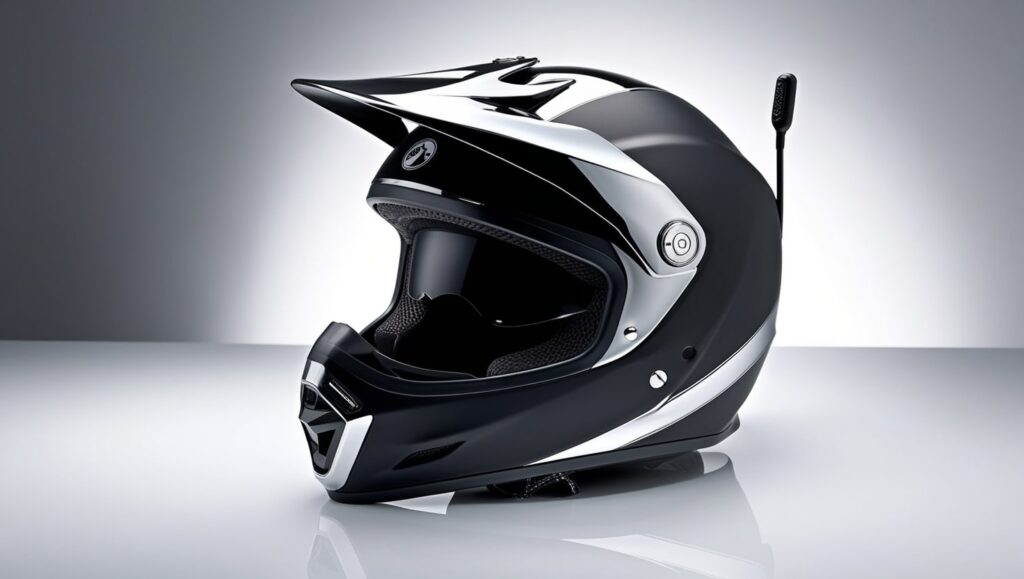
Supplementary Strengths
The ICON Domain Cornelius helmet offers great value at $350, and when paired with the optional comm, the total cost comes to $700. While the lid itself may be cheaper and slightly lower-quality compared to some pricier counterparts, the HelmLink Communications System is impressive. In my experience, it performed well during call tests, delivering solid sound quality that competes with other headsets I’ve tested. The comm system stands out with its ability to connect up to 20 riders, featuring voice-activated digital assistant access, built-in antennas, and a convenient single-click-to-connect intercom.
Another key strength is the Mesh and Bluetooth 5.0 connectivity, which provides a reliable connection for various riding scenarios. With the USB-C port, the HelmLink can reach a full charge in just 2.5 hours, offering between 8 and 10 hours of use per charge. This kind of fast charging and long battery life makes it a practical choice for longer rides. One feature I particularly appreciated was the adaptive-flash-equipped red LED light strip. Thanks to an onboard accelerometer, it senses when the bike is decelerating and activates the taillight, adding extra safety without needing to be linked or wired to the motorcycle.
In terms of usability, the control buttons on the physical control panel are perfectly placed for easy access, even while wearing gloves. With only three buttons, the system is simple to memorize and operate, which is great for riders who prefer minimal distractions while on the road. These supplementary strengths make the ICON Domain Cornelius and its HelmLink a strong contender in the Bluetooth helmet market.
The Not So Good
The ICON Domain Cornelius helmet offers great value at $350, and when paired with the optional comm, the total cost comes to $700. While the lid itself may be cheaper and slightly lower-quality compared to some pricier counterparts, the HelmLink Communications System is impressive. In my experience, it performed well during call tests, delivering solid sound quality that competes with other headsets I’ve tested. The comm system stands out with its ability to connect up to 20 riders, featuring voice-activated digital assistant access, built-in antennas, and a convenient single-click-to-connect intercom.
Another key strength is the Mesh and Bluetooth 5.0 connectivity, which provides a reliable connection for various riding scenarios. With the USB-C port, the HelmLink can reach a full charge in just 2.5 hours, offering between 8 and 10 hours of use per charge. This kind of fast charging and long battery life makes it a practical choice for longer rides. One feature I particularly appreciated was the adaptive-flash-equipped red LED light strip. Thanks to an onboard accelerometer, it senses when the bike is decelerating and activates the taillight, adding extra safety without needing to be linked or wired to the motorcycle.
In terms of usability, the control buttons on the physical control panel are perfectly placed for easy access, even while wearing gloves. With only three buttons, the system is simple to memorize and operate, which is great for riders who prefer minimal distractions while on the road. These supplementary strengths make the ICON Domain Cornelius and its HelmLink a strong contender in the Bluetooth helmet market.
Verdict: If you’re on a budget but still want a cutting-edge comm system, the ICON Domain Cornelius with its HelmLink system is your best bet. This lid offers both Bluetooth and Mesh connectivity in a unique-looking, retro-inspired package that combines style with modern technology. It’s a great option for riders who want high-quality features without breaking the bank.
- Shell Material: Made from FRP, providing strong and lightweight protection for the rider.
- Weight: Currently N/A, but designed to balance protection and comfort.
- Closure: Features a Double D-Ring system for secure fastening.
- Safety Certification(s): Meets DOT, ECE, and PSC safety standards, ensuring reliable protection.
- Comm Tech: Equipped with Bluetooth and Mesh connectivity for seamless communication on the road.
- Battery Life: Offers 8-10 hours of continuous use, great for long rides.
- Manufacturing Origin: Produced in Korea, known for its high-quality manufacturing.
Related: Best Road Cycling Sunglasses
2. Ruroc Atlas 4.0 Carbon
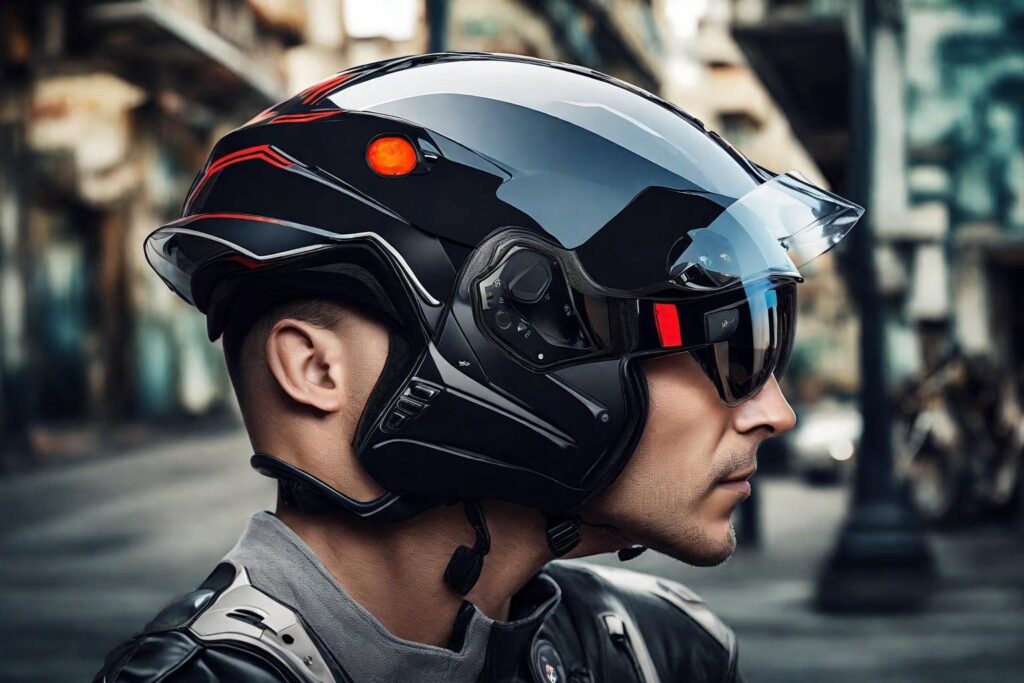
Pros:
- Features unique shell design that stands out from other helmets.
- Offered in a huge range of colors, patterns, and finishes, allowing for customization.
- Utilizes NASA-developed RHEON tech for enhanced impact protection.
- Equipped with a Fid-lock chin-strap for quick and secure fastening.
- Outstanding battery life, making it ideal for long rides.
Cons:
- Awkward placement of control panel which can make adjustments difficult while riding.
Unlike traditional helmets that have gradually evolved over time, the Ruroc Atlas 4.0 completely jettisons the usual path of progress for a truly revolutionary approach. This motorcycle helmet has been reimagined and reengineered from the ground up, making it a flagship in Ruroc’s fourth-generation moto lids.
It features an ultra-advanced carbon fiber shell paired with NASA-developed RHEON reactive polymer, providing top-tier protection and flexibility. The self-guiding magnetic FIDLOCK buckle and custom zippered cheek pads add convenience and security, while the emergency quick release system ensures rider safety in critical situations.Equipped with a pin-lock red visor that provides a 215º wide horizontal field of view and adjustable ventilation ports, the Atlas 4.0 balances both aesthetics and practicality.
Additionally, the helmet can be optioned with a world-class Bluetooth comm system. Co-developed by Cardo and Harmon Kardon, this system is known as the Shockwave and ensures seamless communication and audio quality, making the Atlas 4.0 a top choice for tech-savvy riders.
The Good
The Ruroc Atlas 4.0 Carbon helmet is truly impressive, drawing inspiration from knight’s helmets, fighter pilot helmets, and even the shape of the human skull. It is constructed using a lightweight carbon fiber shell, which is available in both gloss and matte clear-coat finishes. The helmet is designed in the UK but manufactured in China, ensuring a balance of high quality and affordability.
Its open and closable ventilation ports at the chin and crown help keep you cool, while the massive field of vision offers a 215° horizontal and 100° vertical view, giving you a broader perspective on the road. The optical-grade ballistic polycarbonate face shield is PINLOCK-ready and set on a quick-change mounting system, making it easy to swap visors as needed.
One of the highlights of the fourth-generation Atlas motorcycle helmet is its variety of models and trim levels. The $350 fiberglass-shelled Atlas 4.0 Street, the $475 carbon-shelled, RHEON-equipped Atlas 4.0 Carbon, and the $650 carbon-shelled, aero-upgraded Atlas 4.0 Track offer options for riders with different needs and budgets.
The Atlas 4.0 Carbon model, which I tested, sits in the middle and provides excellent protection while showcasing its bare carbon finishes. Whether you prefer solid colors, patterns, or designs inspired by skulls or samurai masks, Ruroc has a myriad of visor color options available, even including Marvel, DC, and Star Wars versions.
The liner of the Atlas 4.0 is also worth noting, as it is plush, comfortable, and integrates RHEON, a cutting-edge reactive polymer. Similar to D30 armor, this material stays soft under normal conditions but hardens instantly upon impact, greatly enhancing the helmet’s safety features. The helmet’s unique appearance gives it an identifiable and recognizable look, much like Arai’s helmets. While some might find the design’s divisive aesthetics a bit bold, I find it refreshing and bold.
When it comes to safety, the Atlas 4.0 does not disappoint. It’s equipped with ECE 22.06, DOT certification, and a four-star SHARP rating, giving you confidence in its protection during a crash. I was especially impressed by the visor-swap setup, which uses a proprietary tool-less system with a simple quarter-turn fastener on both sides of the shield’s pivot. This system allows for quick, easy changes while ensuring the visor remains secure at high freeway speeds. The face shield effectively seals out wind and wind noise, although it sometimes needs an extra nudge to fully seat against the gasket.
The Fid-lock buckle is another standout feature. Unlike traditional double D-ring setups, this magnetic, self-guiding, auto-coupling closure allows you to easily secure the helmet while wearing riding gloves. Not only is it extremely convenient, but it also provides a snug and secure fit, rivaling the classic D-ring system. This game-changer feature makes the Atlas 4.0 stand out, enhancing both comfort and ease of use.
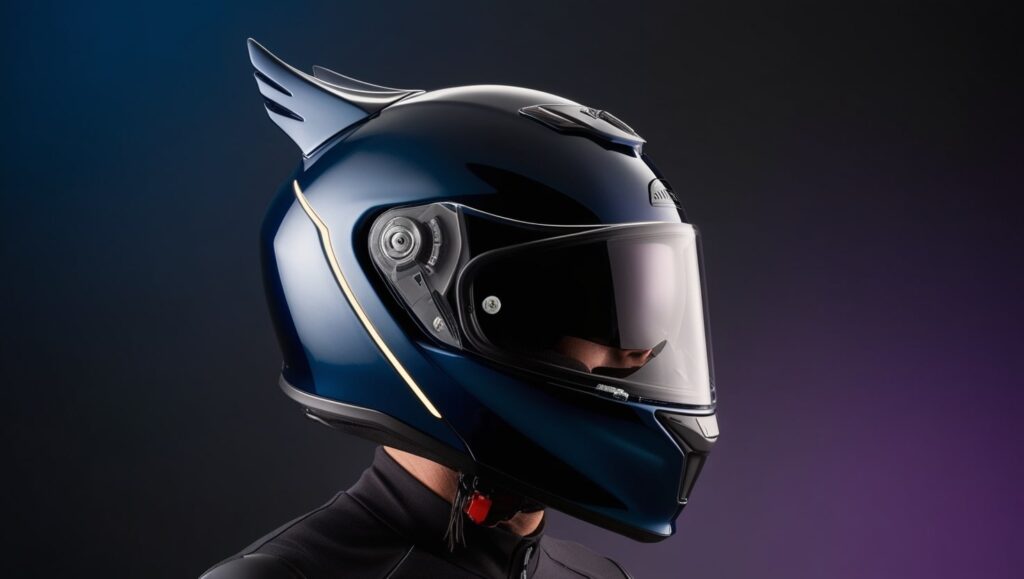
Supplementary Strengths
One of the standout features of the Atlas 4.0 is its Shockwave comm unit, which is designed to fit seamlessly into the helmet. At the very back of the base, there’s a small panel that can be easily popped off to reveal a small recess where the comm unit and its control buttons sit perfectly. This results in an ultra-clean setup, with no protruding antennas or external components. With pre-embedded 1/8th” input jackets and a depression slot for the microphone inside the chin bar, installing the comm system is remarkably easy, taking only a few minutes without needing any instructions or diagrams.
Ruroc put significant time, effort, and resources into developing this Bluetooth comm system for the Atlas 4.0. Instead of going solo, Ruroc teamed up with industry experts like Harmon Kardon, who tuned the drivers, and Cardo, one of the world’s leading comm system purveyors. The Shockwave comm system offers compatibility with up to 15 riders and features class-leading long-range Dynamic Mesh Communication technology. There’s also a Bluetooth version of the Shockwave available for half-the-price, making it a great option for riders with different needs.
Connecting the Shockwave is as simple as it gets. Just turn it on, press the pairing button, and select the unit in your phone’s Bluetooth settings. From there, the helmet will automatically pair with your phone each time it’s near. The advertised battery life of 10 hours is impressive, but I found that it lasted even longer, sometimes close to double. The helmet also tells you the remaining battery life every time you turn it on, which is a handy feature.
One of the biggest complaints about the Atlas 3.0 was its poor sound-deadening, which made it quite loud on the freeway. Ruroc addressed this issue in the fourth-generation model, reducing noise by 57%, making the Atlas 4.0 one of the quietest helmets on the market. Paired with the Harmon Kardon-tuned audio, the Shockwave delivers crystal-clear sound and clearest calling capabilities. During calls, the person on the other end was often astonished that I was riding a motorcycle on the freeway, as the wind, engine, and tires couldn’t be heard.
Ruroc also includes both clear and tinted face shields with the Atlas 4.0, though PINLOCK inserts need to be purchased separately for $30. Additionally, they offer an available insurance policy for new buyers, which provides 50% off on a new helmet if the original is damaged or destroyed in a crash. This is a feature I personally appreciate and one that I think more helmet manufacturers should adopt for their respective lids.
The Not So Good
While the Atlas 4.0 is one of the best motorcycle helmets I’ve used, it does come with a few minor gripes. During my testing, I found that the portion of the shell that protrudes around the nose can sometimes be a bit distracting. Though it doesn’t really block my view, it can still be a small annoyance. That said, this design element plays a big role in giving the helmet its idiosyncratic appearance, which is one of my favorite parts of the helmet.
The cost of the Shockwave Mesh at $429 and the Shockwave Bluetooth at $219 (or $200 when purchased with the helmet) adds up quickly. When combined with the $595 MSRP of the Atlas 4.0 Carbon, the total can easily go over a grand after adding shipping, taxes, and any extras like a helmet bag, extra face shields, or PINLOCK inserts. It’s a significant investment, especially for riders who want to customize their gear.
One of the biggest issues, however, is the location of the comm system’s control unit. Positioned at the back of the neck roll, it keeps the unit out of the way but makes it difficult to use, even when not riding. The placement feels awkward, and using the physical buttons is not ideal. Luckily, I mostly use my phone to control the system, so I don’t deduct too many points for this.
Verdict: If you’re looking for cutting-edge features and a unique appearance, the Ruroc Atlas 4.0 Carbon should be at the top of your list. This brain bucket comes with a laundry list of advanced features and multiple available comm options, making it one of the best helmets on the market. You’d be hard pressed to find another helmet that offers the same combination of technology and style as the Atlas 4.0.
- Shell Material: Made from Carbon Fiber, providing strength and lightweight protection.
- Weight: Weighs 3.3LBs, making it comfortable for long rides.
- Closure: Equipped with a Fid-lock system for secure and easy fastening.
- Safety Certification(s): Meets both ECE and DOT safety standards.
- Comm Tech: Offers Bluetooth or Mesh connectivity options for communication.
- Battery Life: Provides over 10+ hours of battery life, ideal for extended use.
- Manufacturing Origin: Manufactured in China, ensuring high-quality production.
3. AGV Sportmodular
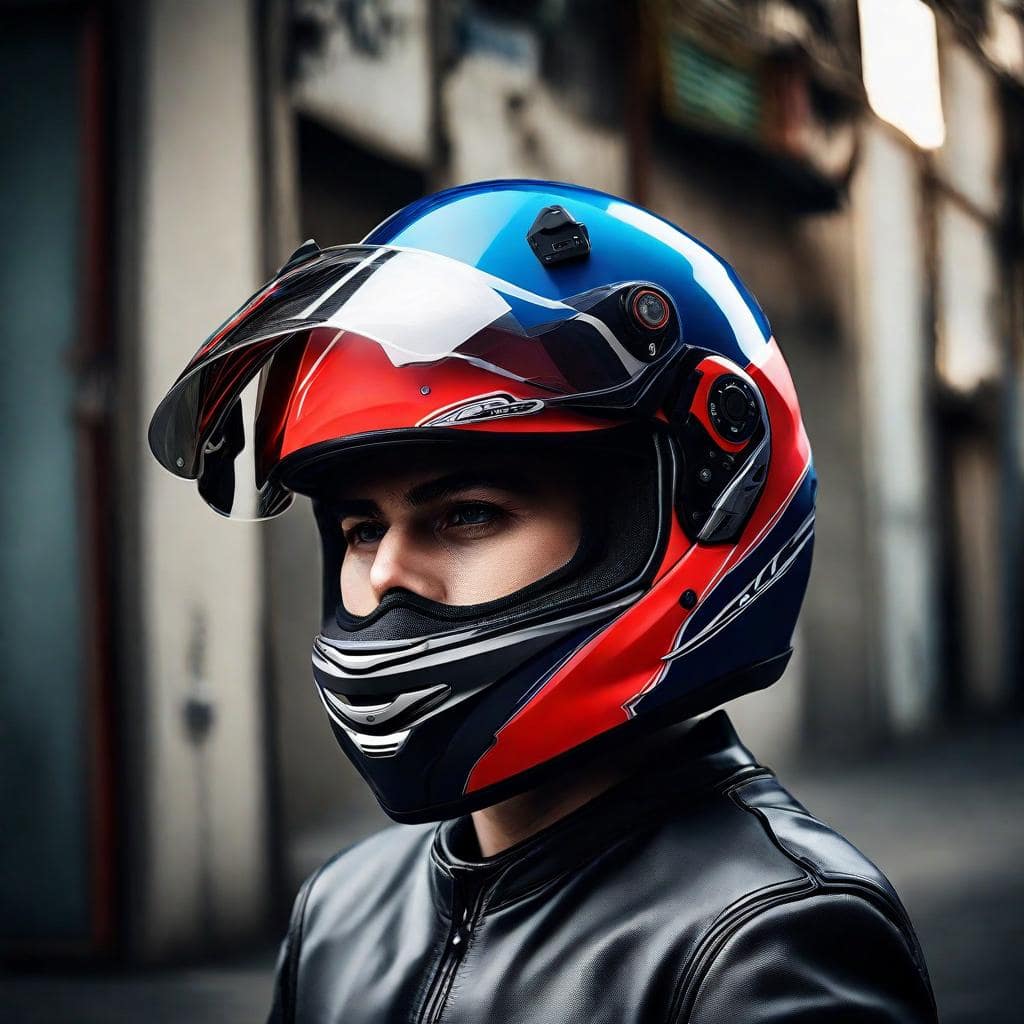
Pros:
- Revolutionary modular helmet design, being the world’s first all-carbon modular lid.
- Benefits from excellent craftsmanship, making it a top-tier choice.
- Super lightweight and insanely aerodynamic, offering great stability at high speeds.
- Ultra-comfortable for long rides, providing a great fit.
- Can be optioned with a handlebar-mounted controller for easy adjustments on the go.
Cons:
- Comes with an expensive price, which may not fit all budgets.
- Doesn’t offer Mesh tech, limiting communication options for some riders.
The AGV Sportmodular is a true marvel of engineering, offering top-shelf quality in an Italian-made design. This carbon fiber-shelled modular helmet is not only lightweight, tipping the scales at around 3lbs, but it also provides the pinnacle of protection. As the world’s first all-carbon fiber construction modular motorcycle helmet, the Sportmodular sets a new standard with its premium features and watershed design. To make it even better, the Italian brand has partnered with Sena to create a custom-developed comm system known as the AGV ARK, making this brain bucket a true game-changer in both style and technology.
The Good
The AGV Sportmodular is a modern modular helmet made from carbon fiber, ensuring both strength and light weight. Its main construction features a flip-up chin-bar and comes in three sizes, all equipped with a five-density EPS foam liner for excellent protection. The shell uses alloy construction chin-bar locking posts, adding durability, while the Integrated Ventilation System helps keep you cool during rides.
The cheek pads are crafted from Ritmo and moisture-wicking 2Dry fabrics, providing comfort and dryness. The helmet also includes a dual-climate, reversible crown pad with a neck-roll made from Shalimar and Nabuk fabric, both treated to be water-resistant.
Weighing just around 3 pounds, the Sportmodular is impressively light, making it ideal for touring duties. Despite its low weight, it meets full DOT and ECE 22.05 certification standards, ensuring top-tier safety. The helmet’s plush interior and carefully designed padding make it incredibly comfortable for long rides. The Tourmodular variant offers a similar experience but is more focused on extended touring.
With its ventilation system featuring open and closable ports, including an adjustable chin-bar intake and a forehead intake port, airflow is well-managed. The rear extractor even doubles as an aerodynamic spoiler, enhancing both comfort and stability.
The field of vision is another standout feature, with an 85° vertical range and a 190° horizontal view, giving you an almost completely unobstructed perspective. The helmet’s build quality is excellent, as it comes with an optical-grade GT3 face shield that includes a PINLOCK insert to prevent fogging. Additionally, the patented, reversible double-face crown pad offers a warm side and a cold side, perfect for changing climates. The interior is also washable and easy to remove, with a removable nose guard and a removable wind protector for added convenience.
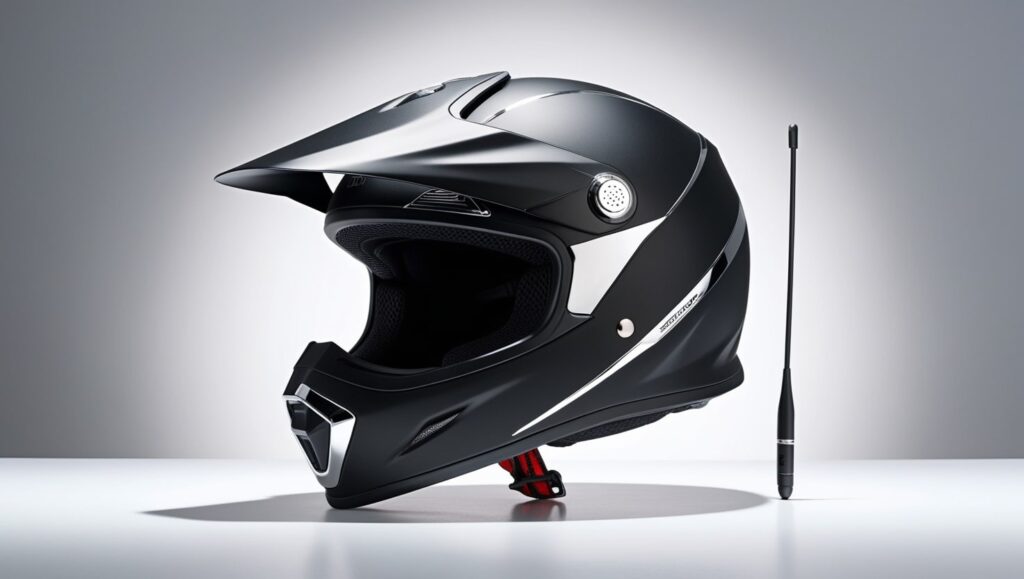
Supplementary Strengths
The AGV Sportmodular has a sleek, aerodynamic shape that truly shines when riding on the freeway. Its design helps it cut through the wind, keeping the helmet stable even at high speeds. With a dynamic weight of zero at 80mph, the helmet feels light and comfortable. This top-tier aerodynamics and low drag-coefficient make it perfect for long rides, ensuring it stays comfortable for extended periods. The traditional double-D ring closure made of titanium adds durability, while the stainless steel D-rings offer a top-shelf touch.
The Sportmodular borrows features from AGV’s race helmets like the Corsa and Pista GP RR, including a glove-friendly mechanical visor lock and a quick-release, quick-change system for the face shield. You can even use small pads and inserts to adjust the fit, making sure the helmet is just right for your head. This attention to detail elevates the riding experience, offering both performance and comfort.
One of the standout features is the optional ARK comm system, which comes with a built-in FM radio tuner that includes both scan and save functions. The Audio Overlay allows for audio multitasking, and with Bluetooth 4.1, you get a range of up to a mile. The smartphone app and voice control add extra convenience. What impressed me most was the smart volume control, which automatically adjusts the sound based on your surroundings—whether you’re riding on crowded freeways or quieter residential streets. The three physical buttons make it easy to use, and the layout is simple to memorize.
The ARK’s audio quality is good, though not exceptional, but the call quality is impressive, likely due to the boom mic. The battery provides 9 or 10 hours of use, which matched its real-world performance during my rides. Like most modern cells, the battery life may decrease over time, but that’s a common battery-tech issue.
I also appreciate that the Sportmodular can use a dedicated comm with an optional boom-style mic, similar to the high-end Schuberth SC2 comm. Plus, the Sena’s Advanced Noise Control helps reduce background noise, and it’s compatible with a handlebar-mounted remote controller, adding even more ease to the riding experience.
The Not So Good
While the Sportmodular is a phenomenal helmet, there are a few minor issues that surfaced during my testing. Unlike other helmets where the comm systems neatly integrate into recesses or compartments, the ARK intercom mounts directly to the outside of the helmet’s shell. Though it follows the helmet’s lines and looks custom-designed, its appearance isn’t as tidy or well-integrated as other high-end Bluetooth-ready brain buckets on the market.
Additionally, the ARK only offers Bluetooth 4.1, while other modern comms, like the Schuberth SC2, use Bluetooth 5.0 for better connectivity. It also lacks Mesh connectivity, which is a feature many riders would prefer. Lastly, the MSRP of the Sportmodular starts at $860, and adding the ARK comm for another $280 brings the total price to around $1,150. This doesn’t include tax, shipping, or any add-ons like a bare carbon finish or an expensive design version.
Despite its bevy of features and top-shelf material selection, spending over a grand on a cutting-edge Italian-made all-carbon modular helmet may seem steep. However, given the quality and the state-of-the-art comm, the price could still be considered justifiable for those seeking the best.
Verdict: The AGV Sportmodular is a premium Italian modular helmet that impresses with its insanely-svelte weight, top-notch craftsmanship, and incredibly stable, aerodynamic form. While it doesn’t come cheap, its long list of features and highlights make the MSRP feel easy to justify. This helmet is ideal for riders seeking the perfect balance of performance, style, and protection.
- Shell Material: Made from Carbon Fiber, offering both strength and lightweight protection.
- Weight: Weighs 3.2LBs, making it one of the lighter helmets available for extended use.
- Closure: Features a Titanium Double D-Ring for secure and durable fastening.
- Safety Certification(s): Meets both DOT and ECE safety standards for high protection.
- Comm Tech: Equipped with Bluetooth technology for easy communication while riding.
- Battery Life: Offers 9-10 Hours of battery life, great for long rides.
- Manufacturing Origin: Produced in Italy, ensuring quality craftsmanship.
Related: How to Get a Title for a Dirt Bike
4. Schuberth S3

Pros:
- Benefits from excellent craftsmanship, ensuring top-notch quality and durability.
- Super-easy-to-install plug-&-play comm system, making it simple to set up and use.
- Can be optioned with a handlebar-mounted controller for more convenient control.
- Loaded with premium features, enhancing the overall riding experience.
- Made by a brand that also makes F1 helmets, showcasing the high level of expertise and performance.
Cons:
- Comes with an expensive price, which may not suit all budgets.
Based in Germany, Schuberth has been making world-class helmets for more than a century, including race helmets for elite Formula 1 drivers. Their expertise in premium motorcycle lids is showcased in the Schuberth S3, a high-performance helmet that combines the safety of race and track lids with the comfort and versatility of touring models. This feature-laden full-face brain bucket is not only meticulously calculated, but also undeniably top-shelf, designed for both performance and long-distance comfort.
The Schuberth S3 is a fantastic lid on its own, but it is further elevated by the available SC2 comm system, which is unequivocally the best plug-and-play unit you can buy. This communication system seamlessly integrates into the helmet, enhancing its functionality without compromising its sleek design. With a focus on both innovation and rider experience, the Schuberth S3 stands out as one of the best choices for motorcycle enthusiasts.
The Good
The Schuberth S3 helmet stands out with its impressive ECE 22.06 and DOT certifications, making it one of the safest helmets on the market. Its shell is truly noteworthy, built using Direct Fiber Processing with a fiberglass construction that is further reinforced with carbon fiber. This combination offers excellent shock and impact absorption while keeping the helmet lightweight at under 4lbs, even with the SC2 comm system installed. The helmet is produced in 7 sizes and features a multi-piece EPS liner for added safety and comfort.
One of the key features of the S3 is its integrated visor with a V-lock mechanism that makes adjustments easy. It also includes the Schuberth Rescue System and a micro-ratcheting chin-strap with the brand’s Anti Roll Off System. While it’s not quite as simple as Fid-lock, it’s still easy to close even when wearing gloves. The helmet comes with the SV6 face shield, which includes a PINLOCK insert to prevent fogging and keep the view clear. The helmet is incredibly comfortable for extended periods, making it perfect for touring, commuting, or daily use.
In terms of aerodynamics, the S3 excels. It remains stable at speed and cuts through the wind effortlessly, thanks to its wind tunnel-tested design. The ventilation system features intake and exhaust ports, along with a double chin air intake with a swappable and washable filter.
The air extractor does a great job of pulling hot air out, keeping you cool on long rides. The City Position mechanism allows the visor to stay slightly cracked to let in fresh air and prevent the helmet from getting stuffy or fogging up at low speeds, similar to the First Position feature on the Shoei GT Air II.
Another aspect worth mentioning is the quiet nature of the helmet. The S3 produces only 85 decibels of noise at 60mph, even on a naked bike. This is thanks to its excellent visor gasket and neck roll design. Additionally, the helmet benefits from Schuberth’s Individual Program, allowing riders to have the head and cheek pads custom-sized for a perfect, bespoke fit. While this premium option does come at an extra cost, it adds to the comfort and safety of the helmet, making it worth considering if you’re not looking to pinch pennies. Overall, the S3 is premium through and through, from its design to its performance.
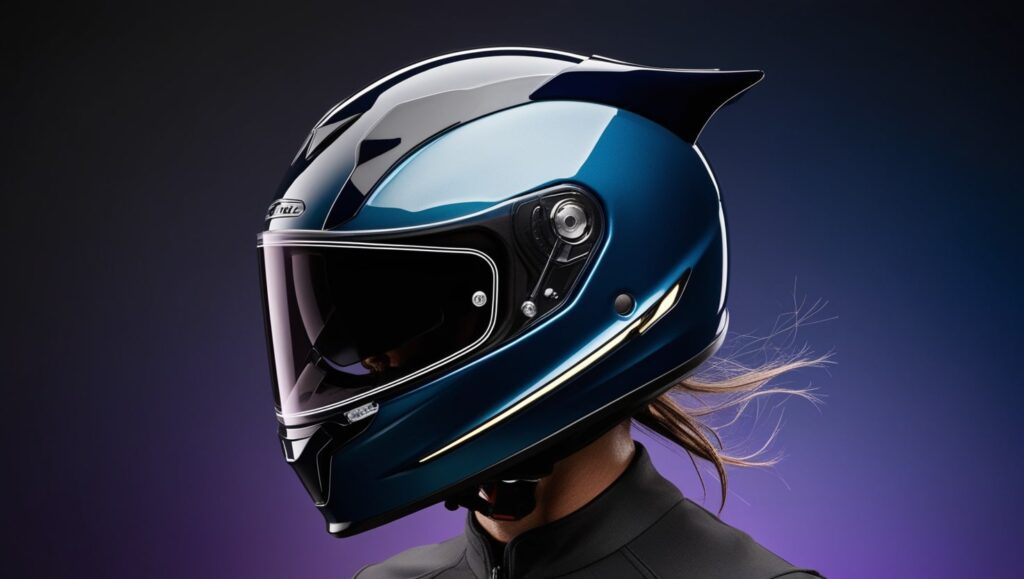
Supplementary Strengths
The German brand Schuberth has truly elevated its S3 helmet with the custom-designed SC2 comm system, developed with help from Sena. The SC2 includes a trio of embedded antennas for FM radio, and can be easily paired with a smartphone app to adjust settings or switch between Mesh and Bluetooth modes.
The sound quality is exceptional, and it’s one of the quietest helmets I’ve used, allowing for crystal clear calls even while riding. You can also option it with a handlebar-mounted RC4 comm controller to adjust volume and music playback, even with non-touchscreen-compatible riding gloves. The voice-control comparability with Google and Apple voice assistants is another great feature.
One of the best aspects of the S3 is how easy it is to install the SC2. This plug-and-play unit neatly slots into a recess at the back of the helmet, under a removable cover. The control unit attaches to the side of the lid, and the Bluetooth-ready helmet already has the speakers and mic preinstalled. All you need to do is plug the comm in, similar to inserting a thumb-drive into a USB slot, making the installation incredibly simple.
The SC2 offers a more-than-half-mile range, audio multi-tasking capabilities, and supports both Mesh 2.0 tech and Bluetooth 5.0 connectivity. Its advanced noise control works like active noise cancelation in cutting-edge headphones and wireless earbuds, reducing background noise while riding. The SC2 also comes with an optional boom microphone that can replace the low-profile unit already preinstalled from the factory, allowing for even better voice clarity.
In terms of battery life, Schuberth advertises 12 hours, but I found this to be conservative. When using the SC2 mainly for music, I was able to get closer to 20 hours per charge, making it an excellent choice for long rides.
Related: How Many Miles Do Motorcycles Last?
The Not So Good
The S3 helmet carries a significant price tag, starting at $599 for the solid colors and $699 for the graphic design. When you add the SC2 Com System for $349, the total rises to $948, or $1,048, excluding tax, shipping, and any additional features or upgrades. This can feel expensive, but as they say, you get what you pay for, especially with the convenience of the plug-and-play comm system. However, if you plan to use a different comm system, you might be paying for preinstalled hardware you don’t actually need.
Another minor point is the limited color options and patterns available for the S3. While this is mostly subjective and relatively inconsequential, it would be nice to see more choices for customization to suit individual preferences.
Verdict: The Schuberth S3, made by a German brand known for producing race lids for F1 drivers, is an ultra-premium full-face all-arounder. It stands out with its cutting-edge comm system and plug-and-play installation, making it one of the most user-friendly Bluetooth-ready helmets on the market. If you don’t mind spending a few extra bucks, this brain bucket is likely your best option for top-tier performance and convenience.
- Shell Material: Carbon Fiber-Reinforced Directly-Processed Fiberglass for strength and durability.
- Weight: 3.875LBs, offering a balance of protection and comfort.
- Closure: Features a Micro-Ratchet system for easy and secure fastening.
- Safety Certification(s): Meets ECE and DOT standards, ensuring top-notch safety.
- Comm Tech: Equipped with Mesh and Bluetooth connectivity for seamless communication.
- Battery Life: Lasts 12+ Hours, ideal for long rides.
- Manufacturing Origin: Made in Germany, reflecting premium craftsmanship.
Related: What to Wear Bike Ride
5. Shoei GT Air II
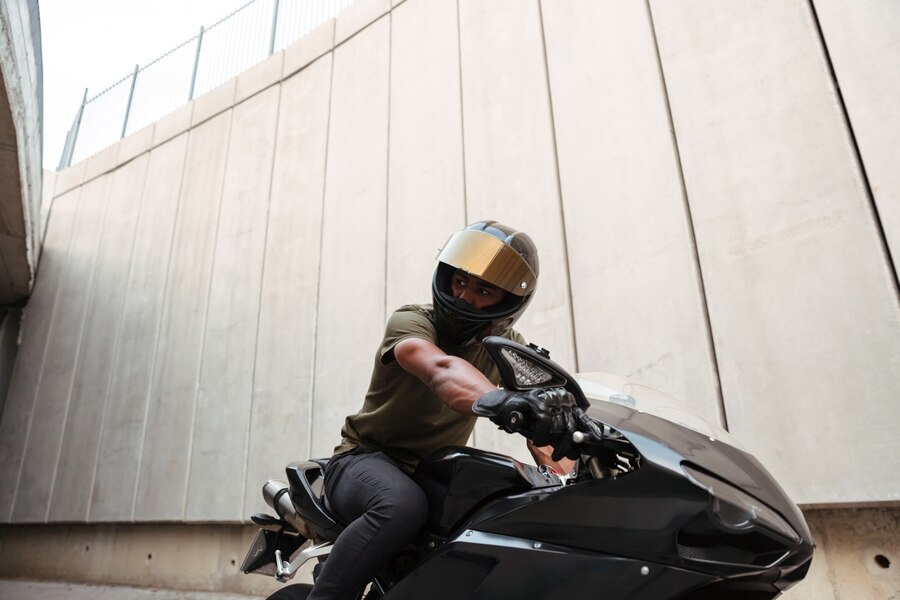
Pros:
- Super versatile helmet suitable for various riding conditions.
- Excellent craftsmanship, ensuring durability and premium quality.
- Brimming with useful features that enhance the riding experience.
- Does a stellar job integrating comm systems seamlessly.
Cons:
- Expensive price, which may not fit all budgets.
- Doesn’t offer Mesh tech, limiting its communication range.
- Limited battery life when using comm systems.
- The GT Air III will be soon available, offering more features.
Back in 2013, Shoei introduced the GT Air motorcycle helmet, which quickly became immensely popular for its versatile sport-touring design. The lid was redesigned in 2019 as the GT Air II, making it a strong second-generation model. Despite its age, the GT Air II remains one of the best full-face all-arounder options on the market. It was also one of the first to feature a custom-designed accompanying comm system, playing an instrumental role in kicking off this now-popular trend in motorcycle helmets.
The Good
The Shoei GT Air II is a highly praised helmet made in Japan, known for its solid construction using a multi-ply Matrix Advanced Integrated Plus shell. The shell comes in three shell sizes and sits over a multi-piece EPS liner, providing a snug fit and superior protection. Its aerodynamic design with a molded air spoiler and robust ventilation system—which includes a trio of intakes and half-a-dozen exhaust ports—ensures that riders stay cool and comfortable even during long rides.
At less than 4lbs, the GT Air II is lightweight but features features like the QSV-2 drop-down sun visor, a micro-ratchet chin strap, and an emergency quick-release system for enhanced safety. The 3-D Max-Dry center pad and multi-layered polyurethane foam cheek pads add to the helmet’s comfort, while the CNS-1 three-dimensionally curved face shield with an included pin-lock ensures clear vision in different weather conditions.
The bottom of the GT Air II, just ahead of the visor pivots, has triangular-shaped elements that can be removed to fit the Shoei SRL II Bluetooth Headset by Sena. These panels reveal small recesses for the comm system, giving the helmet an ultra-clean setup that remains flush with the lid and doesn’t protrude like other comm systems on the market.
With its firmware-upgradeable Bluetooth 4.1 tech, the SRL II offers features like voice prompts, a half-a-dozen hours of battery life, and a built-in FM radio tuner. You can connect the comm to both iOS and Android apps, and it has a one-mile range. As a universal intercom, it communicates with other headsets, including Cardo. One standout feature is the ability to share music between the rider and passenger, making the two-upping experience even more enjoyable, especially for those who don’t share the same proclivity for riding.
The placement of the comm’s control unit on the left side of the helmet makes it easy to access while riding, and the setup with only a few buttons is intuitive, making it simple to use. The sound quality and clarity provided by the Shoei SRL II Bluetooth Headset by Sena is top-notch. It blocks out wind, road, and engine noise, without becoming distorted at high volume. Paired with the GT Air II, one of the quietest lids on the market, it performed excellently in our freeway and highway call test.
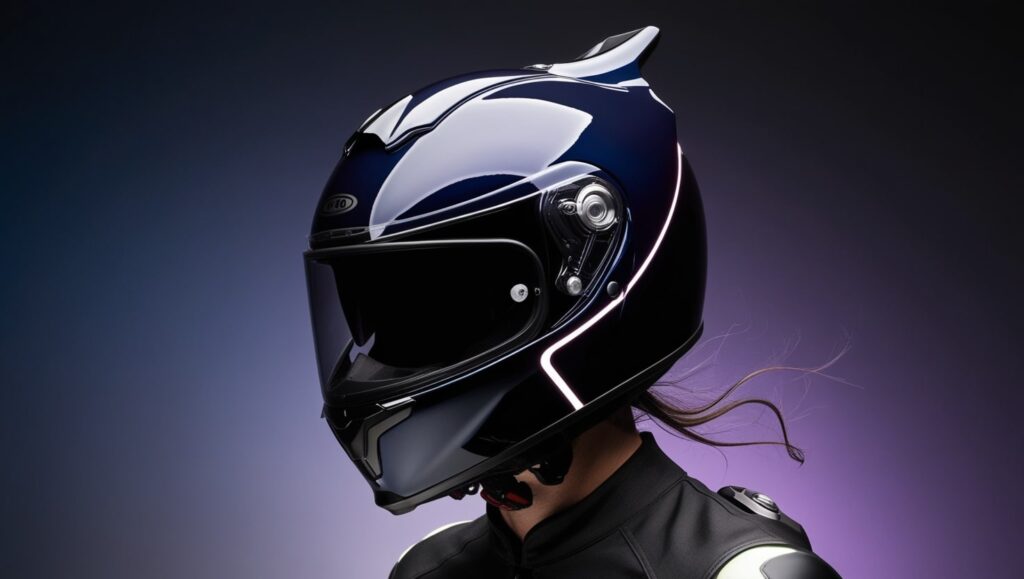
Supplementary Strengths
The Shoei GT Air II stands out as an excellent option in the world of full-face helmets. It comes with several supplementary strengths that make it a top pick for riders. For starters, the GT Air II has a lengthened visor by 0.02″ compared to the first-gen GT Air. The QSV-2 sun visor operates on an ultra-smooth track and is controlled by an external slider.
This setup makes it incredibly easy to use, even when wearing gloves. The CNS-1 face shield is fitted with a PINLOCK EVO lens insert, making it impervious to fogging, and resistant to glare, scuffs, and scratching. Though Fid-lock-equipped helmets are usually my favorite, the micro-ratcheting chin-strap on the GT Air II provides a more secure and precise fit, even with thick winter riding gloves.
Another feature worth noting is the first position of the visor, which cracks open a quarter-of-an-inch to allow fresh air when you’re stopped at a stoplight or crawling through traffic. Though I wish this was mechanically-locking like in the AGV Corsa or Sportmodular, the friction setup works well enough. At just 3.79lbs, the GT Air II is also impressively lightweight for a sport-touring helmet that includes a ratcheting chin-strap, drop-down visor, and an emergency quick-release system, with the added bonus of being Bluetooth-ready with an onboard comm system.
As expected in typical Shoei fashion, the build quality is excellent. The handworked construction is evident, making it stand out in a competitive market. Having been on the market for about five years now, the second-generation GT Air II is still incredibly popular and is available in a wide range of color options, patterns, and even special Marc Márquez MotoGP designs. This makes it a versatile all-arounder, great for both commuting and weekend canyon-carving or long-range touring. Plus, for those who prefer a modular helmet, Shoei also offers the Neotec II, which is quite similar in design.
These features make the Shoei GT Air II an impressive option for riders looking for a Bluetooth-ready helmet with a mix of comfort, style, and cutting-edge tech.
The Not So Good
The GT Air II is a great motorcycle lid, but it does have a few minor issues mainly due to its age. Its comm system, which was designed and developed half-a-decade ago, shows its age in areas like battery life. Out of the box, it offers 6 to 8 hours, but after extensive use over five years, it can drop to around 4 hours per charge, which is disappointing compared to the 10 hours advertised by Shoei and Sena for the SRL II system.
The voice prompts are also a bit dated and not as intuitive as more advanced systems with modern voice control compatibility. Even with firmware upgrades, it falls behind in usability. Despite the quality craftsmanship and impressive features, the GT Air II is quite an expensive Bluetooth helmet. The lid MSRPs at $700, and with the SRL II headset priced at $299, the total cost reaches around $1,000 before adding tax and shipping, potentially pushing the price to $1,250.
Additionally, it’s important to note that Shoei has already released the GT Air III in some regions, though it’s not yet available on U.S. shores. This could make some riders hesitate before pulling the trigger on the GT Air II, knowing a newer gen-three version is already out.
Verdict: The Shoei GT Air II is a remarkable all-arounder helmet that combines the Japanese brand’s top-notch craftsmanship and material selection with a variety of practical and useful features. One of its standout qualities is the available Sena comm system, which neatly integrates into the shell, making it a smart choice for riders seeking convenience and quality in one package.
- Shell Material: Multi-Ply Matrix AIM+
- Weight: 3.79LBS
- Closure: Micro-Ratchet
- Safety Certification(s): DOT
- Comm Tech: Bluetooth
- Battery Life: 6-8 Hours
- Manufacturing Origin: Japan
Related: What Are Squids Motorcycle
Bluetooth-Ready Motorcycle Helmets Comparison Chart
| Helmet | Shell Material | Weight | Closure | Safety Certification(s) | Comm Tech | Battery Life | Manufacturing Origin |
|---|---|---|---|---|---|---|---|
| ICON Domain Cornelius | FRP | N/A | Double D-Ring | ECE, DOT, PSC | Mesh, Bluetooth | 8-10 Hours | Korea |
| Ruroc Atlas 4.0 Carbon | Carbon Fiber | 3.3LBs | Fid-lock | ECE, DOT | Bluetooth, Mesh | 10+ Hours | China |
| AGV Sportmodular | Carbon Fiber | 3.2LBs | Titanium Double D-Ring | ECE, DOT | Bluetooth | 9-10 Hours | Italy |
| Schuberth S3 | Carbon Fiber-Reinforced Directly-Processed Fiberglass | 3.875LBs | Micro-Ratchet | ECE, DOT | Mesh, Bluetooth | 12+ Hours | Germany |
| Shoei GT Air II | Multi-Ply Matrix AIM+ | 3.79LBS | Micro-Ratchet | DOT | Bluetooth | 6-8 Hours | Japan |
What Are Bluetooth-Ready Motorcycle Helmets?
Bluetooth-ready motorcycle helmets are specially designed lids that allow riders to use comm systems like Cardo or Sena for communication on the road. While some helmets come from the factory with built-in comm systems, many of these are low quality and provide poor protection and subpar performance. Leading helmet brands have begun partnering with comm system companies to create units that can seamlessly integrate into the brain bucket for a better experience.
These custom-designed units often require two separate purchases, but it’s still a convenient and user-friendly setup. Many of these helmets come with built-in recesses for microphones, speakers, and wiring, making the process simple and plug-and-play. With small panels that can be removed to easily accommodate the comm systems, riders can enjoy a smooth, integrated experience on the road.
Related: Bike Packing Fork Bags
What’s The Differences Between Mesh & Bluetooth Tech?
Bluetooth comms use what’s called daisy-chain pairing. This means each comm connects to the next in a chain. However, if one rider disconnects or loses the signal, the whole chain breaks, and all the riders’ comm systems get disconnected. Each time you have to manually reconnect, which can be frustrating, especially for groups of riders. The more units connected in the chain, the weaker the overall signal gets, making it less reliable.
On the other hand, mesh comms work like a communication hub. Instead of relying on a single connection, each unit is independent, creating a dynamic network that constantly seeks the best connections with other nearby units. This mesh technology doesn’t need to be rebooted or manually paired every time it’s turned on. Whether you have a dozen riders or just two, the mesh system automatically reconnects, offering a seamless experience.
Another major difference is the use of mesh channels, which allow riders to switch between different communication lines, similar to a walkie-talkie. In contrast, Bluetooth systems don’t offer this flexibility, making mesh units far more versatile and user-friendly. Mesh technology also provides better performance with superior signal strength and clarity, which remains stable even with large groups of riders.
Brands like Sena and Cardo have introduced their own proprietary mesh technologies. Sena uses Mesh 2.0, while Cardo offers Dynamic Mesh Communication (DMC), both offering a better experience compared to traditional Bluetooth-enabled systems.
Why To Avoid All-In-One/Pre-Installed Bluetooth Helmets
Many Bluetooth helmets that come preloaded with comm systems often have questionable build quality and safety. These helmets tend to leave something to be desired, especially compared to higher-end models. Modern comm systems are typically priced between $150 and $400, while brain buckets with preinstalled comms, like those from Sedici, BILT, or Sena, can range from $250 to $600. After you deduct the price of the comm system, what you’re left with is often a cheap, low-quality helmet that may seem convenient but lacks adequate protection.
While it might seem easier to buy a helmet with everything already installed, these options usually compromise on both quality and protection. High-end helmets with custom-designed and purpose-built comms offer much better safety and features. Whether you’re looking for an adventure riding helmet, a modular, or a full-face helmet, there are plenty of great options with available dedicated comm systems that don’t cut corners on safety or performance.
As more reputable helmet manufacturers begin developing smart helmets, this might change in the coming years. However, as of now, there isn’t a pre-installed Bluetooth helmet model that I would trust to protect my head or brain, nor would I feel comfortable recommending one to others.
Related: How to Measure for Bike Helmet
What To Consider When Shopping For A Bluetooth-Ready Helmet?
If you’re new to buying a motorcycle helmet, it can be a little difficult to know what to focus on. With that in mind, we’ve created this short guide that highlights the six most important factors to consider before choosing your next helmet.
Materials & Construction:
When choosing a Bluetooth-ready helmet, the materials and construction are critical for safety. High-quality helmets use fiberglass, EPS liners, or other lightweight materials that provide excellent protection. Inside the helmet, look for machine-washable, moisture-wicking liners and cheek pads that are also antimicrobial to keep the helmet fresh. A helmet with solid constructions ensures long-lasting durability and safety.
Ventilation & Noise:
Good ventilation helps keep the rider cool, but too much air can create wind noise that affects hearing and makes it hard to hear the audio from your comm system. Modern helmets include active noise cancelation tech to reduce unwanted sound and improve audio clarity. Balancing airflow and reducing wind noise are key to a comfortable ride, especially at higher speeds.
Weight:
The helmet’s weight is an important factor, as a heavy helmet can cause strain on the rider’s neck over time. Lightweight materials are used in many helmets to ensure they provide protection without adding unnecessary heft. While comm systems add a bit of weight, they are designed to be as light as possible to avoid discomfort. A lighter helmet can significantly improve your riding experience on long trips.
Shell Size & Fit:
To ensure maximum protection, a helmet needs to snugly fit your head. Premium helmets often come in multiple shell sizes to offer a more precise and comfortable fit. Budget-minded counterparts may only offer one or two sizes, which can compromise safety. Make sure to choose a helmet that provides different shell sizes and fits securely to avoid rattling and ensure effectiveness in case of an impact.
Comm-Readiness:
Many helmets are now designed with comm readiness, meaning they have built-in spaces for comm systems, speakers, and microphones. These advanced comm systems integrate seamlessly, allowing for smooth communication without adding bulk. A helmet with comm readiness is easier to install and more efficient for using audio features like calls, navigation, or music while riding.
Additional Amenities:
Today’s helmets come with many supplementary features that improve both comfort and safety. These can include pin-lock-ready face shields to prevent fogging, drop-down sun visors, and emergency quick-release systems for faster helmet removal in emergencies. Some helmets even offer crash detection and SOS beacons, giving you peace of mind when riding. Look for helmets that provide these extra bells and whistles to enhance your riding experience.
What To Consider When Shopping For A Comm System?
Shopping for communication systems can feel a bit overwhelming, so we’ve created this quick guide that covers six key factors to consider when buying a motorcycle comm system.
Audio Quality:
When buying a comm system, one of the most important things is the audio quality. Whether you’re listening to music, following GPS directions, or making phone calls, the clarity of sound matters. Many top audio brands like JBL and Harmon Kardon design the drivers, speakers, and mics used in modern systems. Features like active noise-canceling tech can help reduce wind and road noise, making your audio experience even better.
Technology & Connectivity:
The technology behind the comm system affects how it performs. The most common systems use either Bluetooth or Mesh technology. Some of the best comm systems can also be paired with smartphone apps, which give you more control over settings and connectivity. Both Bluetooth and Mesh have their pros and cons, so it’s important to choose the one that suits your needs.
Range:
The range of a comm system tells you how far apart two riders can be before they lose the signal or connection. If you’re using Mesh, you’ll usually get a stronger signal than with a Bluetooth setup. But other factors like the region you’re in and any obstructions like hilly valleys or buildings can also affect the range.
Rider Compatibility:
This feature determines how many users can connect to the same comm network. If you often go on group rides, you may want a system that allows multiple riders to connect at once. Some systems can handle a dozen or more users at the same time, but it’s important to choose one that’s easy to pair with different devices.
Battery Life & Talk Time:
Battery life is another key factor. How long your comm system lasts before it needs a recharge can affect your ride. Most systems offer at least 10 hours of talk time or music playback on a single charge. Thanks to improvements in smartphone batteries, modern systems are much more reliable and can last through long rides without needing frequent recharges.
Additional Amenities:
Lastly, some comm systems come with extra features that add more value. These can include an onboard FM radio, dedicated smartphone apps, and turn-by-turn GPS directions. Depending on your needs, these additional amenities can make your riding experience more convenient and enjoyable.
Honorable Mentions
Quin Phantom
The Quin Phantom is a carbon-fiber-shelled full-face helmet that stands out with its pre-installed comm system and safety features like a built-in crash detection system and an emergency SOS system beacon. With a micro-ratchet chin-strap and both DOT and ECE certification, this helmet offers impressive protection. Its combination of features makes it a real bargain for a Bluetooth helmet, giving you safety and tech in one package.
Sena Stryker
The Sena Stryker is one of the most impressive helmets with preinstalled comm systems. For just $500, this high-tech brain bucket offers both Mesh and Bluetooth connectivity, along with premium speakers and a microphone designed by the audio specialists at Harman Kardon. This combination provides excellent sound quality and seamless connectivity for riders looking for a Bluetooth helmet with advanced audio features.
Forcite MK1S
The Forcite MK1S takes smart helmet technology to the next level. It boasts a carbon fiber shell, an onboard comm system, and even an action camera. Riders can also opt for a speaker upgrade from Master & Dynamic, giving them even more customization. While we didn’t get to test this helmet in time, its specs make it worthy of an honorable mention for those who want a futuristic riding experience.
Shoei OpticSon
The Shoei OpticSon is a cutting-edge smart helmet from a Japanese brand known for its top-notch materials and build quality. This helmet features an onboard HUD, a comm system, and an action camera integrated into the chin-bar. Although it’s not yet available on U.S. shores, this helmet is already gaining attention as a leader in smart helmet technology, earning a spot as a notable honorable mention.




